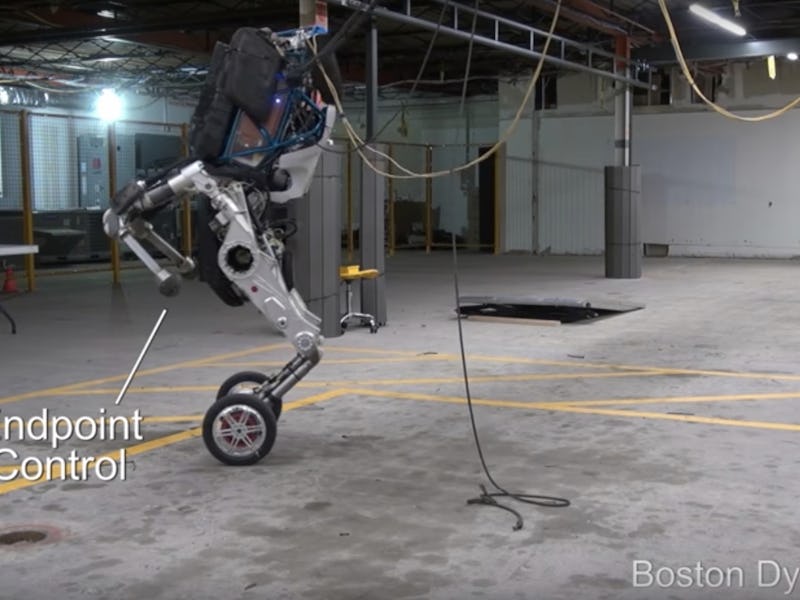In robotics, there is a concept called “biomimetics,” which is basically about stealing Mother Nature’s best ideas without giving her so much as a cut of the profits — but her designs are some of the best out there. It’s been one of the hottest areas in robot design for years,] because engineers have realized that evolved forms evolved for a reason: they’re very well suited to navigating and manipulating our world.
But “our world” is a concept that has changed dramatically over the past several millennia, and in the environments humans actually inhabit today, traditional biological forms might not be the best to navigate this modern world.
So while, biologically-inspired robots are coming, first we’ll likely see a flood of utilitarian robots that look less like biology, and more like the machines they truly are.
Case in point: Boston Dynamics recently unveiled its latest creation, Handle, which looks like a half-unfolded Transformer.
The robot was designed from the ground-up to pick up and move simple objects — and though it navigates a space made for humans, its efficiency at this specific task is much better than the human-inspired ATLAS robot that preceded it.
Historically, engineers have been fairly amazed at the efficiency of biological designs — they’d start off trying to make things move like animals largely for the heck of it, and end up publishing stories about how incredibly good it is at movement. There are whole academic departments dedicated to it.
But a cheetah’s gait was not designed to function while holding a 100-pound box out to the side. It is also not designed to descend stairs or open doors — they’re not raptors!
With such specialized tasks in the pipe for helper bots, the emphasis is now on making ones with a profit potential. For a delivery drone, it would be far more efficient to mimic the design of a hawk, per foot traveled — but hawks have trouble hovering over a customer’s driveway, and so quadcopters have prevailed. The jobs that actually require the human form might turn out to be few and far between — robot prostitution comes to mind, along with robot therapy.
A similar sort of pragmatism is starting to take hold in robotics, as seen in Handle, which throws out the most recognizable aspect of a Boston Dynamics joint: legs.
Without them, Handle can’t hope to traverse the sheer variety of environments that ATLAS might tackle one day down the line. On the other hand, in exchange for that sacrifice, it gets to be far more efficient at rolling across a flat, open space, eliminating up-and-down shaking that would knock most loads out of a set of humanoid graspers in short order.
The Arcadia robotic spider is made out of recycled military and industrial machinery and is over 15 meters tall.
That said, Handle is still somewhat humanoid — it has dual arms placed at roughly arm height, and it throws its weight around in a distinctly hippy sort of way. The idea, though, is that these features were picked purely because they worked, not because they resembled human design.
It will take a long time for robotics to reach the point that a generally human-looking robot has generally human-level abilities and dexterity, but robotics as a business can’t survive on viral YouTube videos that entire time. These less-biological forms will be needed to more directly address more utilitarian problems in the meantime — think along the lines of the Roomba, but pitched to business rather than consumers.
These are the robots that really have the potential to phase out huge portions of the human workforce. They’ll end up in warehouses, of course, but also in the street, on the tarmac, in the sewer, and at the office. Much to the dismay of dogs everywhere, the home will come soon after.
Whether you find human forms creepy or comforting, get ready for machines to finally look like machines again.
